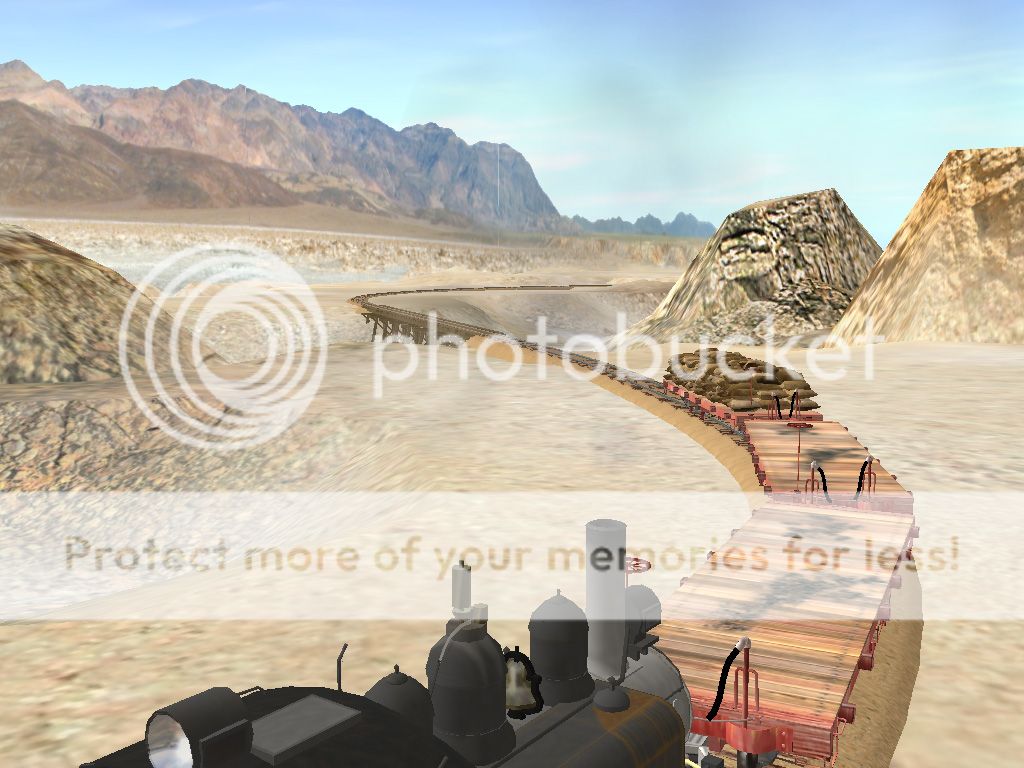TRS 06 Uintah flats; ProtoLARS Gilsonite
As has already been pointed out, GILSONITE was the "Bread and Butter" of the Uintah Railway. At the Utah mines, it was sacked and loaded onto 36ng flatcars which were hauled over Baxter Pass by the URY to Mack, Colorado for transshipment onto the standard gauge D&RG. Since those flatcars were by far the most numerous piece of Uintah rolling stock, any plausible virtual simulation of the Uintah would do well to include a whole bunch of URY flats - both empty, and loaded with sacks of gilsonite.
Although there are already a good number of 36ng flatcars available on the DLS, a closer look at the Uintah prototype will reveal some subtle characteristics which are not exhibited by any of the currently available Trainz models. Most notably, the Uintah flatcars feature a rather peculiar brake pipe arrangement (raised up above the deck at each end). Also, nearly every piece of URY rolling stock was equipped with metal "buffers" at each end. These unique features contribute a distinctive look to the otherwise typical rolling stock; one which screams "Uintah" to the rail buff, just as much as the "URY" lettering painted on the sides.
Take a look at these shots taken during a fairly typical Uintah switching operation. In the first, a short string of URY flats is being pushed along a spur line near the mines. The raised brake piping is clearly visible on all cars, and the "buffer" plate can be seen on the nearest car. Also, the distinctive stacks of gilsonite bags can be seen on the leading car:
The second shot shows a side view of the same cars after uncoupling:
I've modeled these Uintah flats for Trainz 2006 (using Gmax) based on plans and photos from “Uintah Railway; the Gilsonite Route” by Henry E. Bender, Jr. and “Uintah Railway Pictorial” (both volumes) by Rodger Polley. I've also modeled a “Sacked Gilsonite” ProtoLARS product which interacts in typical fashion to load/unload the gilsonite bags onto the flatcars.
I guess from this thread that some other Uintah fans might be interested in my efforts. Although most of the work on the flat cars is complete, I've not uploaded the cars or gilsonite product... The flats still need LOD work, and I'd like the final version to include random numbering and random textures. Maybe some of the experts could help me figure those things out... I'm just a beginner, and awful shy about putting my models online...




